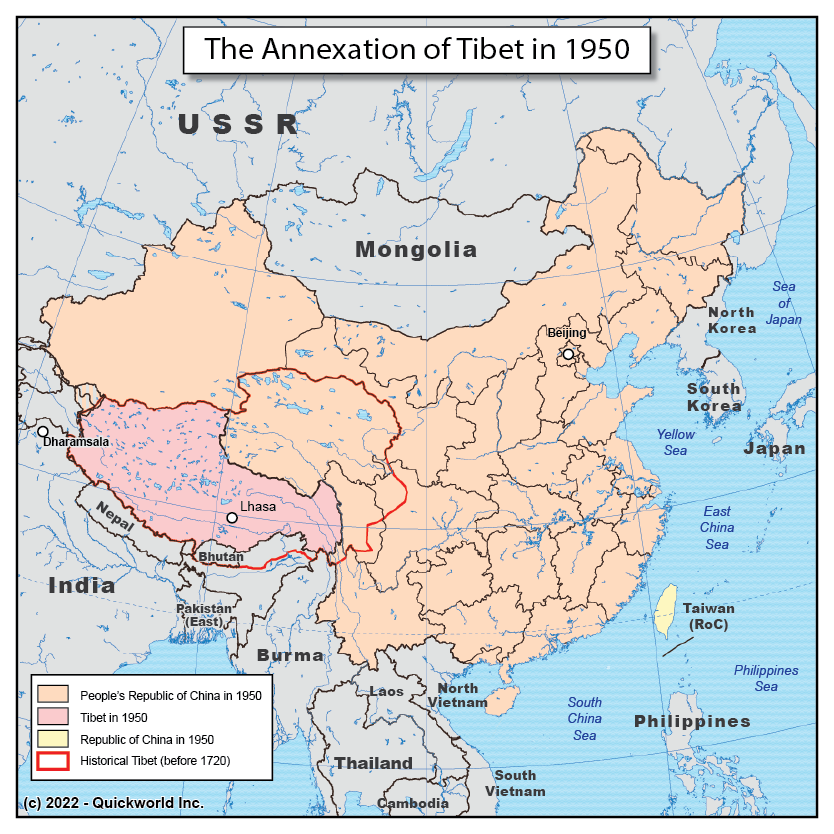Our Series on Twentieth Century Conflicts takes us to Tibet, a former country that was absorbed by the People's Republic of China in 1951.
The Tibetan Highlands have been the home of sparse populations of herders for many centuries. The Tibetan people have developed a very unique culture that is centered on the fundamental role of Buddhism and the theocratic nature of its regime. While the Chinese Empire had claimed sovereignty over Tibet for a long time, the establishment of a Republic in 1911 left the remote region of Tibet as a de facto independent nation. The takeover of China by the communists after WW2 and the creation of the People's Republic of China in 1949 was going to change that. China imposed a treaty on Tibet that resulted in annexation of the country in 1951. While initially accepted by the Dalai Lama, Tibet's theocratic leader, the treaty was later denounced by the Dalai Lama as having been signed under duress. In 1959, the Dalai Lama escaped Tibet and found refuge in Dharamsala in Northern India.
Tibet became an autonomous region of China, but the spiritual role of the Dalai Lama and his political role as an opponent to the Chinese Regime remains strong more than 70 years after the takeover.
The Annexation of Tibet


